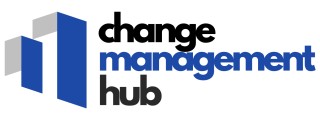Understanding Change Management in Portfolio Oversight
Grasping the Fundamentals of Change Management
In the realm of portfolio oversight, the ability to adeptly manage change significantly impacts investment outcomes and project efficiencies. At its core, change management is a structured approach to transitioning individuals, teams, and organizations from a current state to a desired future state. This is particularly crucial in portfolio oversight, where changes must be carefully orchestrated to maintain alignment with organizational objectives and investment goals.
Portfolio oversight involves many elements, from identifying potential risks to assessing overall portfolio performance. Change management helps synchronize these elements, enabling fund managers to make smarter decisions. Efficient change management ensures that project risks and investments are adequately monitored and adapted in real time.
The Role of Change Management in Portfolio Monitoring
Change management in portfolio oversight enhances the decision-making process by offering a comprehensive view of projects at the portfolio level. It assists in flagging potential risks before they escalate into significant issues, allowing risk management strategies to be employed proactively. Real-time monitoring of portfolios provides ongoing insights into performance risks and data-driven decision making.
By focusing on the progress and potential risks, portfolio oversight can be more agile, thus fostering a better adaptation to shifts in the private investment landscape. For example, private equity fund managers need to constantly adjust strategies to safeguard their investments. Here, change management plays a crucial role, offering techniques to effectively implement and monitor changes.
For those curious about structured approaches to organizational transformation, exploring the Hope, Think, Know framework
here provides valuable insights into managing change, not just at a project level, but throughout the entire investment lifecycle. The fundamental principles of this framework beautifully align with the needs of change management in portfolio oversight, anchoring decisions with thoughtful foresight and practical application.
Identifying Challenges in Portfolio Oversight
Tackling the Challenges in Overseeing Portfolio Changes
Portfolio management consistently faces numerous challenges as it involves a dynamic mix of projects, investments, and potential risks. Understanding these challenges is crucial for fund managers, particularly when aiming for enhanced portfolio oversight and improved performance.
One of the primary hurdles in portfolio oversight is the need for real-time data acquisition and monitoring portfolio activities. Fund managers require timely information to identify potential risks and make smarter decisions. Without effective portfolio monitoring, staying abreast of any shifts in investment landscape becomes difficult.
Risk management, especially in investment scenarios, presents another significant challenge. Identifying potential risks at a portfolio level is crucial as these can adversely affect the overall portfolio performance and cause progress risk. Effective risk assessment ensures preparedness and the ability to mitigate unforeseen risks in a timely manner.
In the realm of private equity, the challenge extends to comprehensive oversight. Monitoring private funds involves a careful balance of reporting and assessment of third-party data, ensuring alignment with the overarching strategy. This includes a thorough view of projects under consideration and ongoing performance evaluation.
Moreover, balancing informative reporting with effective decision making calls for superior oversight. The ability to view projects from a portfolio perspective helps in aligning individual projects with broader organizational goals, ensuring maximum return on investments.
Adopting a cause-and-effect analysis framework such as the ADKAR model might enhance understanding of how changes impact the portfolio. This model assists managers in pinpointing specific change components, providing a structured approach to exploring potential change impacts and outcomes. Learn more about this in the
ADKAR model in change management.
Strategies for Effective Change Implementation
Leveraging Change Strategies for Improved Portfolio Oversight
In the fast-paced realm of portfolio oversight, the ability to implement change effectively is crucial for success. By integrating strategic change management into portfolio processes, fund managers can navigate potential adversities and steer their investments towards optimal performance.
One of the primary steps in effective change implementation is adopting a holistic view of projects at the portfolio level. This approach helps identify potential risks early, aiding in proactive risk management. Whether in private equity or other investment sectors, comprehensive oversight allows for smarter decisions that align with long-term goals.
Furthermore, real-time data reporting is essential. By continually monitoring portfolio performance, managers can assess ongoing projects and anticipate issues before they arise. This proactive stance in managing risks not only enhances portfolio performance but also ensures that decision-making processes are well-informed and timely.
Risk assessment strategies play a pivotal role as well. Through thorough evaluation, fund managers can recognize progress risk and performance risk, which can then be mitigated through tailored interventions. Incorporating third party evaluations may also enhance the objectivity of these risk assessments, offering an unbiased view of the investments.
Lastly, embracing flexibility and adapting as needed are key to managing uncertainties effectively. For those seeking in-depth insights on adapting change strategies, visiting
https://www.change-management-hub.com/blog/embrace-flexibility-adapt-where-possible-direct-where-necessary might offer invaluable guidance to refine strategic decisions that shape the future of their portfolios.
By focusing on the strategic elements of change management, fund managers can better equip their portfolios to withstand challenges and capitalize on potential opportunities.
Effective Techniques and Tools for Monitoring Evolutions
Monitoring the trajectory of change initiatives in investment oversight necessitates a blend of intuition and precision, drawing on both qualitative insights and quantitative data. A robust monitoring framework helps track progress in real time, providing fund managers with crucial metrics needed for sound decision making.
Leveraging Performance Metrics
Incorporating a strong set of performance indicators is essential. These metrics enable monitoring at both the project and portfolio level, supporting smarter decisions by identifying potential risks and opportunities. Performance risk measures help in evaluating the impact of change across different dimensions, ensuring an integrated view of project and portfolio performance.
- Performance Dashboards: These provide real-time updates, allowing for quick identification of risk management issues and areas needing attention. Real-time dashboards help in maintaining oversight and balancing risk, particularly in private equity environments.
- Risk Assessment Tools: Implementing detailed risk assessment models aids in tracking progress risk and assessing how changes impact overall portfolio risk. By evaluating potential risks frequently, managers can adjust strategies and mitigate issues before they affect portfolio returns.
Utilizing Advanced Reporting Systems
Adopting comprehensive reporting techniques is pivotal in managing transformations. Consistent and thorough reporting ensures all stakeholders maintain a unified view of projects, aiding in seamless communication and transparency.
- Automated Reporting Tools: These tools streamline data collection and reporting processes, providing a clear view of project milestones and any deviations from the expected trajectory. Automating these systems minimizes human error and enhances portfolio reporting accuracy.
- Third-Party Monitoring Solutions: Engaging third-party specialists can offer unbiased reviews of change impacts. These entities provide specialized insights into portfolio performance monitoring, allowing for a comprehensive view and fostering improved oversight.
Data-Driven Decision Making
The integration of big data and analytic tools plays a crucial role in facilitating effective change oversight. These tools assist in monitoring portfolio transformations, helping identify potential risks and enabling smarter decisions.
- Predictive Analytics: These models anticipate future trends based on current data, assisting in preempting issues before they arise and offering strategies to optimize portfolio performance. They are indispensable in a proactive management approach.
- Data Visualization Tools: Graphical representations of data patterns improve the ease with which fund managers can interpret information, aiding in faster response times to changes and supporting robust investment decisions.
Incorporating these techniques and tools, when combined with strategic oversight, ensures that change is managed adeptly in the evolving landscape of portfolio management. Decisions are bolstered by comprehensive, real-time analytics and a clearer understanding of projects within the wider investment framework.
Case Studies: Successful Change Management in Portfolio Oversight
Real-World Examples of Change Management Success
Portfolio Oversight in Action: Portfolio management involves a delicate balance of monitoring data, assessing projects, and managing risk effectively. The key to successful portfolio oversight often lies in effective change management strategies, as showcased by real-world examples.
- Private Equity Insights: A leading private equity firm implemented a robust change management strategy that involved detailed data analysis and reporting. By integrating advanced monitoring techniques, they improved their portfolio oversight, leading to increased investment performance and better risk management.
- Investment Fund Transformation: An investment fund struggled with potential risks due to a lack of comprehensive oversight. By adopting a proactive change strategy, the fund improved its decision-making processes and portfolio performance, resulting in reduced progress risk and heightened fund security.
Tools Driving Change: Leveraging the right tools is crucial for success in change management. Real-time data analytics tools and risk assessment software have proven instrumental in enhancing portfolio monitoring and ensuring smarter decisions at the portfolio level.
- Monitoring Projects Efficiently: A financial institution utilized third-party applications to monitor projects in real time. This shift allowed fund managers to identify potential risks before they impacted performance, demonstrating the power of effective oversight in portfolio management.
- Performance Risk Assessment: Other organizations have implemented customized risk management frameworks, allowing for a comprehensive view of potential risks across all projects. This approach not only helps in managing current investments but also prepares for future challenges.
These cases underscore the essential role of change management in enhancing oversight and optimizing portfolio performance across various sectors. Smart integration of data and technology into portfolio practices is imperative for mitigating risks and achieving long-term success.
Future Trends in Change Management and Portfolio Oversight
Emerging Perspectives on Change Management in Portfolio Oversight
In a dynamic landscape where portfolios are continually evolving, staying ahead of future trends in change management and portfolio oversight is paramount. One of the significant shifts expected is the increasing integration of advanced technologies. Artificial intelligence and machine learning are becoming pivotal in enhancing portfolio monitoring by offering real-time data analytics and comprehensive insights. This tech-driven approach not only helps identify potential risks but also supports fund managers in making smarter decisions.
Moreover, the role of private equity in reshaping portfolio oversight strategies is gaining prominence. With its focused management style, private equity drives the need for meticulous risk management and exhaustive performance risk assessment. This will likely lead to new methodologies in portfolio risk management, prioritizing both quantitative metrics and qualitative assessments.
As remote work and digital platforms continue to influence the business environment, there's also a growing emphasis on virtual project management and risk reporting tools. These tools help provide a broader view of projects and investments, enhancing decision-making processes at the portfolio level.
Another trend to watch is the shift towards a more collaborative approach involving third-party stakeholders. As companies recognize the value of diverse perspectives, integrating inputs from third-party advisors in portfolio oversight can offer a more balanced view of project timelines and investment outcomes.
Future trends indicate that portfolio oversight will increasingly focus on sustainability and ethical investments. As awareness around climate change and corporate governance grows, stakeholders are likely to consider these factors as integral to long-term portfolio performance.
By preparing for these evolving trends, organizations can not only improve their portfolio performance but also ensure they are well-equipped to navigate potential disruptions efficiently, ensuring resilient and robust management strategies that align with emerging expectations in the investment landscape.
-large-teaser.webp)













